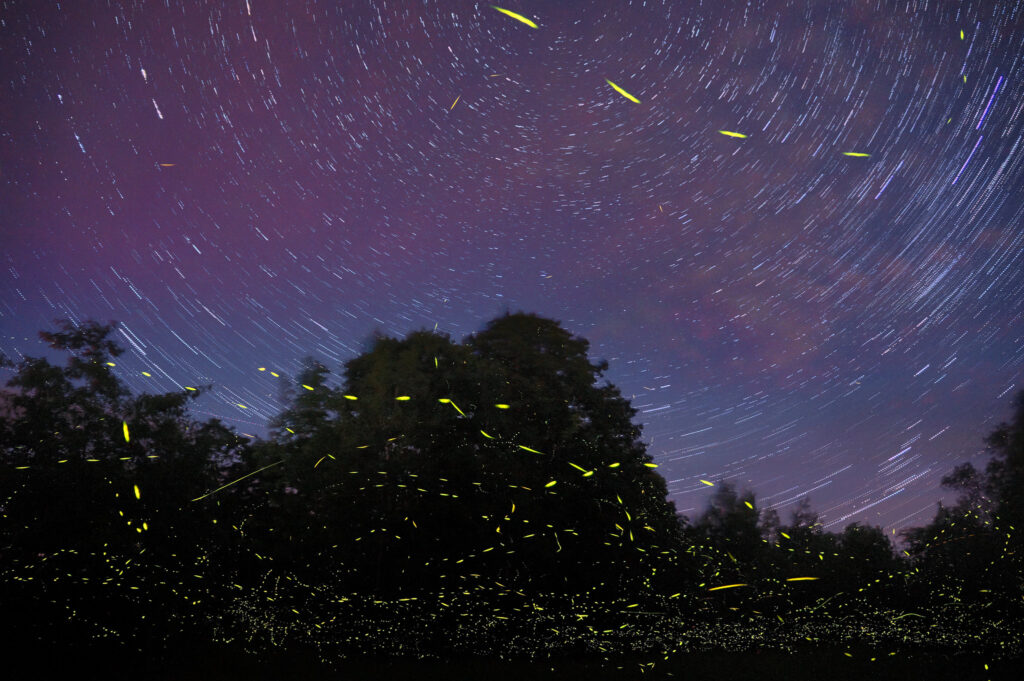Fireflies, or lightning bugs as they are often called, are a familiar and cherished sight on warm summer nights.
These bioluminescent insects captivate people of all ages with their magical light displays. While their glowing abdomens are a source of wonder and joy, there is much more to these fascinating creatures than their enchanting lights.
Fireflies are beetles, not flies, and their luminescence is a result of a chemical reaction that occurs in specialized cells called photocytes located in their abdomen. This phenomenon, known as bioluminescence, serves multiple purposes, including communication, mating, and predation.
Fireflies use their light primarily for mating. Each species of firefly has a unique flash pattern that males use to attract females. Females respond with their own species-specific flashes, guiding the males to them. This intricate dance of light is not only a beautiful spectacle but also a crucial aspect of the firefly’s reproductive process.
There are over 2,000 species of fireflies found worldwide, with a significant number residing in tropical and temperate regions. Each species has distinct flash patterns and timing, which helps avoid cross-species communication and ensures successful mating.
Fireflies can be found in various habitats, including forests, fields, marshes, and suburban backyards. They thrive in warm, humid environments and are often found near water sources, which provide the moisture necessary for their larvae to develop.
The firefly lifecycle consists of four stages: egg, larva, pupa, and adult. Female fireflies lay their eggs in damp soil or leaf litter. After a few weeks, the eggs hatch into larvae, commonly known as glowworms due to their ability to emit light. The larval stage can last from several months to up to two years, depending on the species and environmental conditions. During this time, the larvae are voracious predators, feeding on snails, slugs, and other small invertebrates.
Once the larvae are fully grown, they enter the pupal stage, during which they undergo metamorphosis. This stage lasts for several weeks, after which they emerge as adults. Adult fireflies typically live for only a few weeks, during which their primary focus is on reproduction.
Despite their widespread appeal, fireflies face several threats that have led to declining populations in many areas. Light pollution from streetlights, buildings, and vehicles can interfere with the fireflies’ ability to communicate, as artificial light can drown out their bioluminescent signals.
There are several ways individuals can help protect fireflies and ensure their survival. Creating firefly-friendly habitats by preserving natural areas, reducing light pollution, and avoiding pesticide use can make a significant difference. Planting native vegetation, maintaining moist, undisturbed areas, and providing water sources can also support firefly populations.
Fireflies are more than just a summer spectacle; they are vital components of their ecosystems and indicators of environmental health. Their captivating light displays remind us of the wonders of nature and the importance of preserving the natural world. By taking steps to protect fireflies and their habitats, we can ensure that future generations will continue to enjoy the magical glow of these enchanting insects.
Photo by Mike Lewinski
Kelley V. Phillips is the Assistant Director for Red-tail Land Conservancy. She strives to cultivate wonder in nature and action to protect it.




